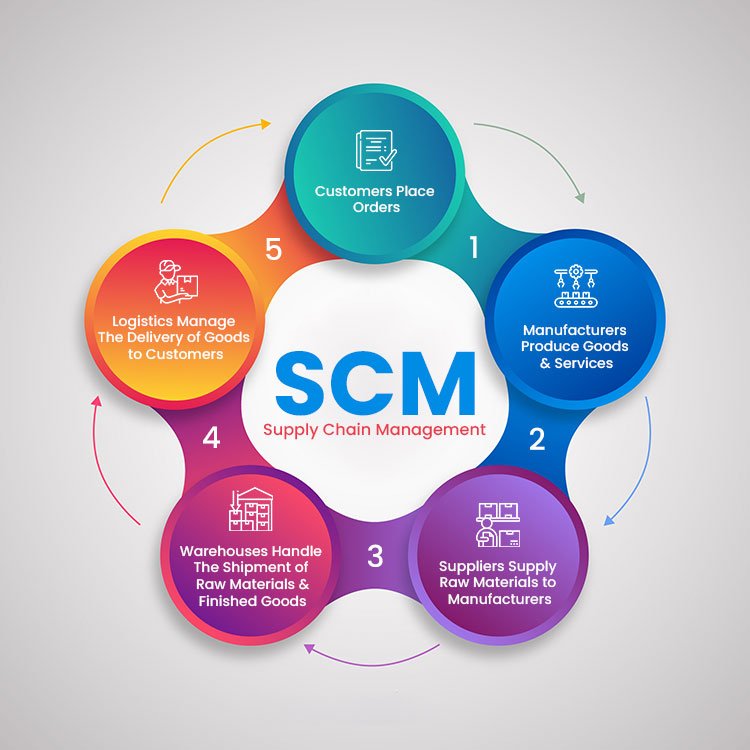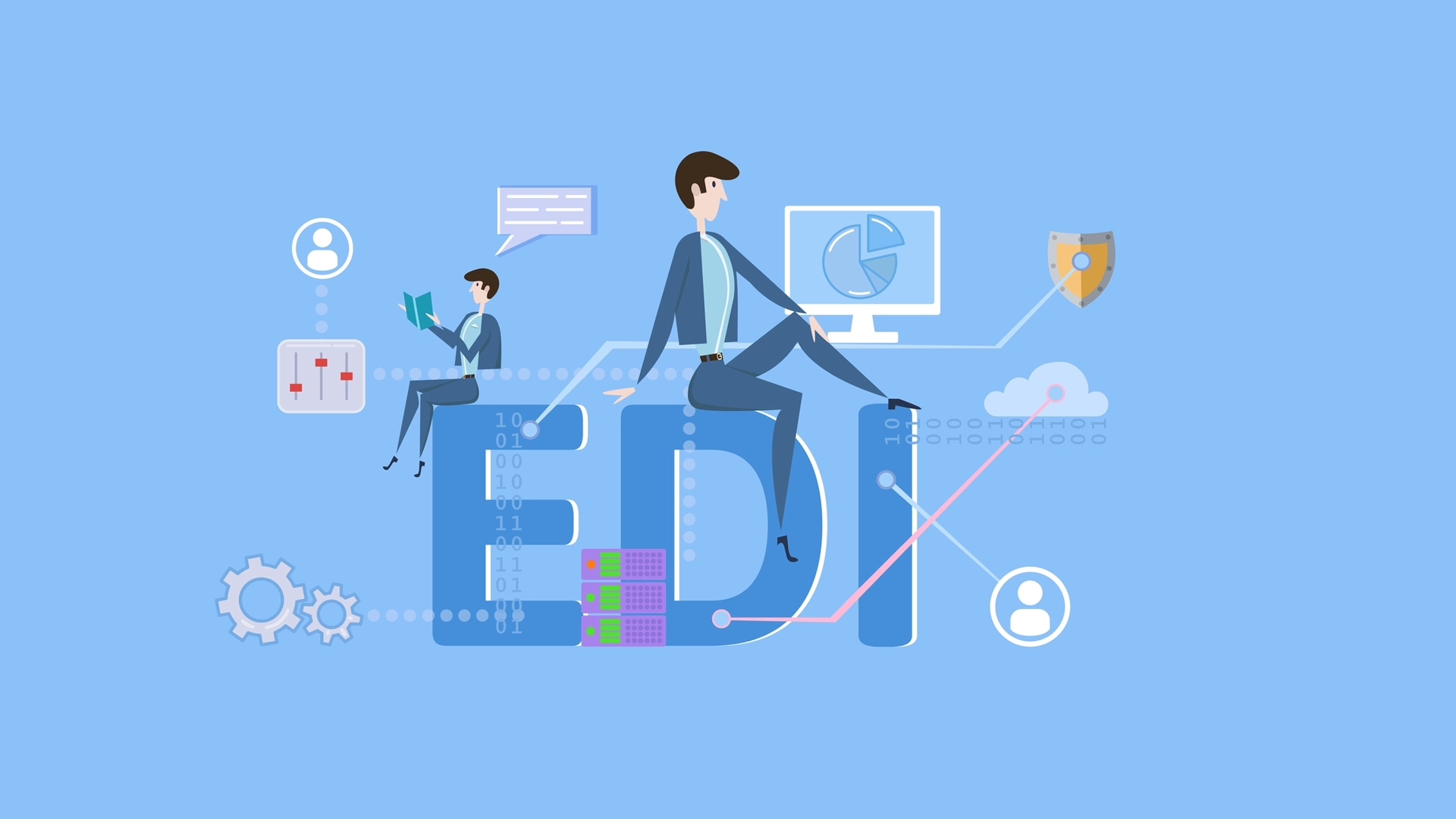Before we dwell on understanding the basics of Electronic Data Interchange (EDI), it is essential to know how supply chain management works without EDI.
By definition, supply chain management (SCM) is the management of the flow of goods and services between businesses and locations. It includes the movement and storage of raw materials, work-in-process inventory, finished goods, and end-to-end order fulfillment from the point of origin to the point of consumption. SCM is a network of interconnected, interdependent systems that must talk to each other and exchange data.
Understanding SCM
A simple e-commerce supply chain (order-to-cash process).
The entities involved are,
- Customers place orders
- Manufacturers produce goods and services
- Suppliers supply raw materials to manufacturers
- Warehouses handle the shipment of raw materials and finished goods
- Logistics manage the delivery of goods to customers
SCM is a virtuous circle involving many players. Any failures or delays would disturb the entire order-to-cash process.
In relay running races, athletes exchange batons to continue the race. Similarly, systems generate and exchange documents in SCM to ensure that the cycle of events happens seamlessly.

What type of documents are exchanged?
Below are some key SCM documents that flow between the systems involved
- Order
- Purchase Order
- Invoice
- Advanced Shipping Notice (ASN)
- Sales Order fulfillment
Each of these documents contains repeated data formatted differently. These documents are manually generated, processed, and transferred between systems of suppliers and customers. Manual processing of massive volume of documents led to,
- Errors and inconsistencies in the data in different systems
- Delay in processing had a cascading effect on order fulfillment and payment
- Labor-intensive work that led to operational inefficiencies
- Auditing, monitoring, and reporting the document workflows was difficult
- Onboarding new trading partners was time-consuming
EDI turned out to be the technology that answered these issues and concerns.
What is EDI?
EDI enables the electronic exchange of documents between buyer and supplier.
EDI has predefined standards that a document must follow. For example, it specifies where suppliers must mention the order quantity in an invoice. In addition, EDI supports different communication standards and messaging standards. Communication standards are the method of transferring data like OFTP, AS2, and messaging standards define how data must be formatted.
EDI guidelines, standards and specifications have evolved so companies can speak the same language electronically and communicate more efficiently.
EDI processing stages
- Extract: Data is extracted from backend systems by the sender
- Map: Mapping the data into a specific EDI format. If required, data is transformed.
- Translate: Sender translates the outbound message for transmission.
- Transmit: The sender transmits the outbound message.
- Acknowledge: After translating the inbound message, the recipient provides a “functional acknowledgment” to the sender.
Summary
With the advent of EDI in SCM, there is less or no manual processing of B2B documents. So, data accuracy and consistency are improved. EDI not only manages bulk data exchange but also makes it secure. EDI integrations have made automation of business processes easier and operationally efficient. EDI data trails generate critical business management information. You can contact our team for any query related to EDI and SCM and get a proper solution.






